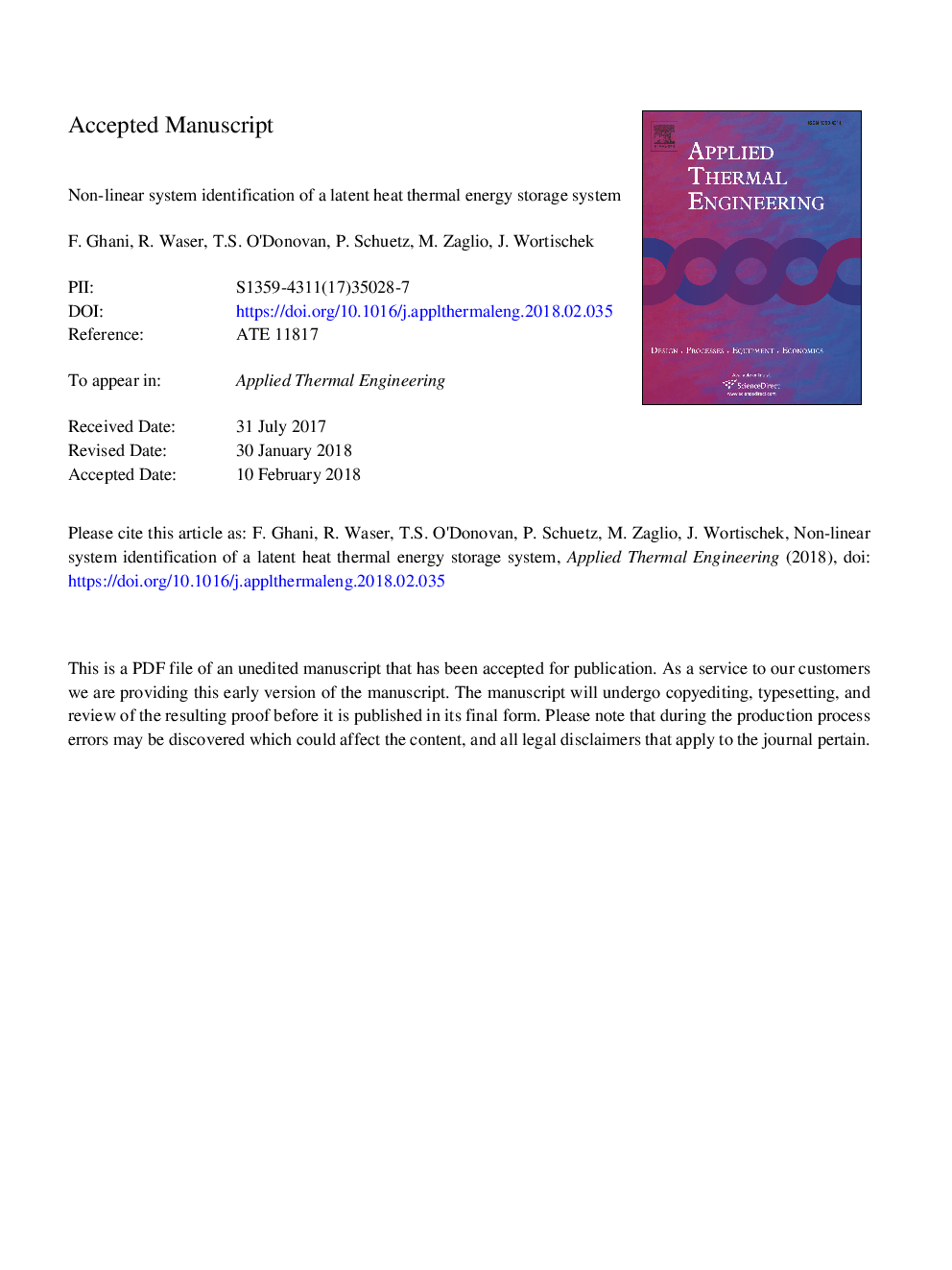ترجمه فارسی عنوان مقاله
سیستم غیر خطی شناسایی یک سیستم ذخیره انرژی حرارتی پنهان
عنوان انگلیسی
Non-linear system identification of a latent heat thermal energy storage system
| کد مقاله | سال انتشار | تعداد صفحات مقاله انگلیسی |
|---|---|---|
| 93823 | 2018 | 16 صفحه PDF |
منبع

Publisher : Elsevier - Science Direct (الزویر - ساینس دایرکت)
Journal : Applied Thermal Engineering, Volume 134, April 2018, Pages 585-593
ترجمه کلمات کلیدی
شبکه عصبی پویا، ذخیره سازی گرمایی خنثی، مواد تغییر فاز مدل سازی، خصوصیات حرارتی،
کلمات کلیدی انگلیسی
Dynamic neural network; Latent heat storage; Phase change material; Modelling; Thermal characterisation;

